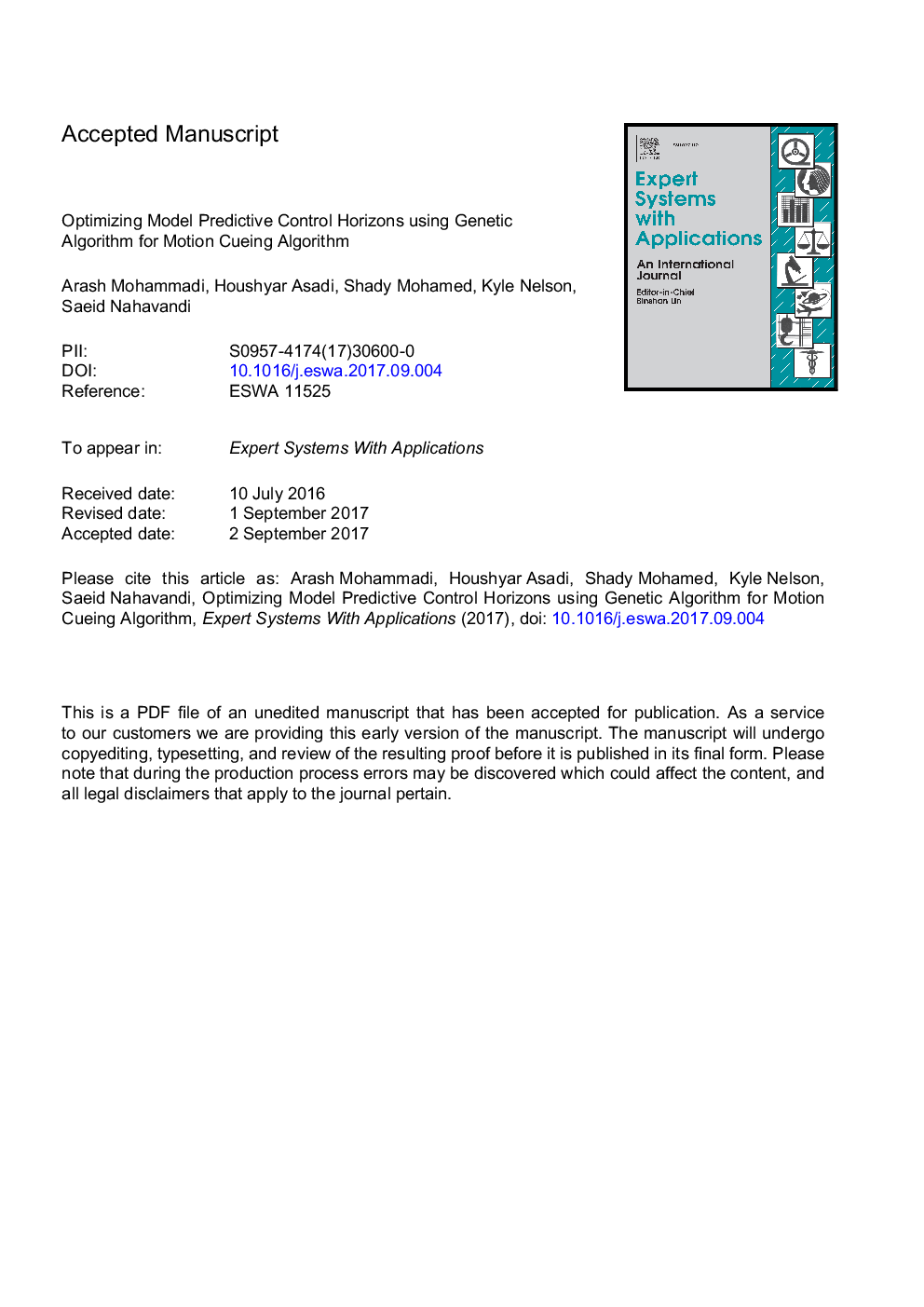| Article ID | Journal | Published Year | Pages | File Type |
|---|---|---|---|---|
| 4942998 | Expert Systems with Applications | 2018 | 19 Pages |
Abstract
Driving simulators are effective tools for producing the feeling of driving a real car through generation of a similar environment and motion cues. The main problem of motion simulators is their limited workspace which does not allow them to produce the exact motions of a real vehicle, hence they need a Motion Cueing Algorithm (MCA). A high-fidelity motion simulator can be used for vehicle prototyping and testing as well as driver/pilot training to enhance transportation safety. Using motion simulators with the capability of replacing realistic motions for these purposes is less risky for drivers and more time and cost-effective. Due to workspace limitations, washout filters have been designed to bring motion simulators back to a neutral position; however, the problem of violation of platform constraints is still an issue. Recently Model Predictive Control (MPC) has become popular in driving simulators. The primary advantage of this control method is respecting constraints and consideration of future dynamics. The horizon windows of future control and prediction affect the computational burden and the output performance. As these horizons are chosen manually by the designer, they are sub-optimal and in some cases too wide or narrow. In this paper, a novel method based on Genetic Algorithm (GA) is employed to achieve the best control and prediction horizons considering minimization of several terms such as sensation error, displacement and the computational burden. This new method is proposed to eliminate the MPC-MCA drawbacks such as time-consuming empirical guessing by iterative trial-and-error for the initial control and prediction horizons as selecting the initial control and prediction horizons based on trial-and-error can lead to large sensation error, low motion fidelity, inefficient platform usage as well as the computational burden. Therefore, this method provides a new framework for tuning not only the MPC-MCA optimally but also all the MPC-based applications while minimizing the desired cost function and computational load. The simulation results show the effectiveness of the proposed method in terms of output performance improvement and the computational burden.
Related Topics
Physical Sciences and Engineering
Computer Science
Artificial Intelligence
Authors
Arash Mohammadi, Houshyar Asadi, Shady Mohamed, Kyle Nelson, Saeid Nahavandi,
